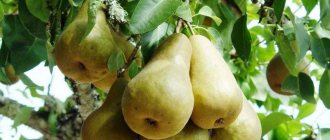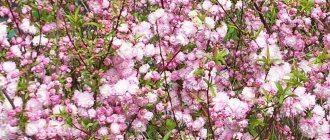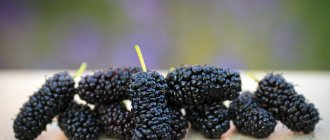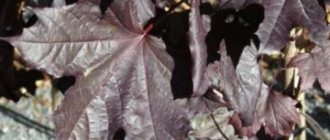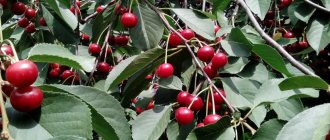A native of Asia Minor, hazel (hazel) has spread to the center of Europe, the forests of the Caucasus, America and Canada. This representative of the Birch family, thanks to its unique taste and excellent decorative properties, has long won the respect of gardeners around the world. The cultivated crops, also known as hazelnuts, are grown on an industrial scale in the southern regions. Wild thickets are found in the forests of the Southern Urals and Perm region, and the Caucasus mountains. Today we’ll talk about what a hazel tree is, is it a shrub or a tree, how is it grown and used? We will learn about the types and distribution of this plant on the planet, about the intricacies of caring for it, increasing its productivity and decorative qualities.
Hazel: is it a shrub or a tree?
Hazel unites the genus of shrubs, but among more than 20 species of its representatives there are also trees. For example, the bear nut, which will be discussed further, is a magnificent specimen of a tree, slender and tall, with a beautiful crown shape. But most hazel species are still shrubs, the wild forms of which form dense undergrowth in deciduous forests. The most widespread and of high economic importance is hazel, or common hazel. The history of the origin of the word “hazel” is interesting. This original Russian name comes from the noted similarity of the outlines of the leaves of the bush with the body shape of the lake fish bream, known since ancient times as the breadwinner of the Russians.
How to care for hazelnuts?
Proper and regular care of shrubs is the key to a healthy plant and high yield:
- Watering
. Only under conditions of sufficient watering can the desired harvest be obtained. During 1 fruiting season, the nut requires at least 6 abundant waterings. - Fertilizer.
Hazelnut roots very quickly suck nutrients from the soil, so regular fertilization is necessary. Compost is one of the best natural fertilizers. It is advisable to apply it only when digging the soil deeply. You can add nutrients to the soil by adding phosphorus, potassium and nitrogen fertilizers. At the same time, it is enough to apply potash fertilizers only once every 2-3 years, the rest can be applied annually. This will allow the bush to fully grow and develop. - Loosening and mulching.
After each watering, it is better to carry out a good loosening. It should be carried out very carefully so as not to damage the root system, which is located on the surface. Mulching is necessary in order to prevent the area from becoming overgrown with weeds and maintaining a normal level of moisture in the soil. By the way, the hazelnut shell itself is a good tool for mulching and fertilizing. - Shelter for the winter.
Hazelnuts tolerate winters well even at temperatures of -37°C. Most varieties are frost-resistant. But if the varieties are less resistant to frost, the plant is still very young, or frosts greater than -35°C are possible in the region, then it is better to insulate the shrub. This can be done with sawdust or fallen leaves. You can also pour a small mound of soil over the roots or gently bend the branches to the ground. - Trimming.
Pruning is carried out in mid or late autumn. It is very important to prune the bush, which will form the correct shape of the bush. This will provide the best conditions for the growth and fruiting of hazelnuts. To do this, it is worth removing excess shoots, and the side shoots are bent and fixed with wire. The basis of the bush should be no more than 9-11 shoots. Once every 6 years, the root shoots are pruned, the bush is thinned, and broken or weak shoots are also removed. Once every 14-16 years, the bush should be rejuvenated.
What does hazel look like?
The vast majority of hazel species are deciduous shrubs with large, rounded leaves of a magnificent rich green color. Hazel gravitates toward the warm, moist, fertile soils of broad-leaved forests and gets along well with their permanent residents: oaks, elms, maples, dominating the undergrowth and often forming a solid wall. Wild hazel species are branched shrubs with a large number of stems coming from the rhizome. They reach a height of 3-5 meters. Bushes can reproduce vegetatively (offshoots and cuttings) or by seeds - nuts. They begin to bear fruit in the 6-7th year with seed propagation, and in the 4th year with vegetative reproduction. In summer, a hazel bush can be easily identified by its leaves, which have an oval shape and are decorated along the edges with small teeth and a sharp tip. The hazel leaf has a slightly rough texture to the touch.
Basically, the hazel crop is a shrub 5–6 meters in height with smooth bark, the color of which varies from grayish to terracotta-brown. Young shoots are usually colored gray-green, interspersed with small yellowish specks. Young shoots are similar in appearance to linden shoots, differing only in their rather dense pubescence. Hazel shoots can easily be confused with elm. Both their leaves and bark are very similar in color and texture. But there are also differences. The elm, like a real tree, always has only one trunk, and the young growth of hazel is multiple, which is typical of a shrub. In addition, hazel has oval gray-green buds, while elm has reddish and pointed buds.
Planting care
With a dense crown, insects attack the trunk or leaves. Due to its thickness, this is not visible, so annual shaping is a mandatory procedure. Diseased foliage is cut off. After the cuts heal, the culture fully adapts and begins to actively grow and bear fruit.
The main requirement for caring for hazelnuts is lighting and location of the bush. Most often, the eastern and western sides are suitable for planting.
The plant's access to sun and air is important. To make the bush breathe easier, unnecessary shoots are cut off. When forming the crown, the main trunks should be preserved. If the plantings are already old, you can carry out rejuvenation by cutting off the old trunks. The bush should not be very dense.
Interesting! The hazelnut in your garden is Common Hazel.
Features of the view
Hazel is a shrub or tree that belongs to monoecious plants, but with separate formation of male and female flowers on the same crop. Male earring flowers are collected in soft yellowish inflorescences, similar to birch or alder catkins. Laid in June-July, they are already clearly visible in the fall and bloom in early spring, as soon as the plant overwinters. The wind picks up and carries pollen.
The female inflorescences are practically invisible. Consisting of small flowers tightly pressed together, they are located inside special buds, also formed in the previous season. During the flowering period, the leaf scales covering the inflorescences move apart, allowing the pollen carried by the wind to be caught in a bunch of bright red stigmas.
Diseases and pests
Nuts are loved not only by people, but also by insects. The most common:
- Nut weevil.
- Longhorn beetle.
- Caterpillars.
Pests are extremely disruptive to growing because they feed on the life sap of the plant. To get rid of them at the initial stage, you should treat the plantings with a soap or tobacco solution according to the scheme. Larvae and other insects cannot tolerate these odors.
When a plant is heavily attacked, there are various means to combat them. The most effective are insecticides. To rid your plantings of insects, you need to choose the right product. The treatment is carried out in the spring, as soon as the beetles appear, in order to prevent egg laying. If you see spider mold, which subsequently turns black, this means that the hazelnuts are affected by powdery mildew. Destroy all attacked leaves. Colloidal sulfur is well suited for this purpose. Use the drug strictly according to the instructions. If it is not there, then you can replace it with a solution of lime and sulfur.
Types of hazel
The hazel genus, numbering almost 20 species, is represented by a variety of crops. They are all different, but many species are distinguished by high frost resistance and longevity. Hazel is unpretentious, grows on various soils, but develops and bears fruit more successfully on more fertile soils. Regardless of the type, hazel (it is a shrub or a tree) is moisture-loving, but it does not need excess water. For the most part, it can tolerate slight shading, but in open sunny areas, the decorative effect and productivity of hazelnuts is at its highest. Here are some types of hazel.
Soil selection and fertilizing
Walnut grows almost everywhere except swamps. It is not attracted to sandy and saline soil types. The more fertile the soil, the more abundant the harvest. A loose substrate with a neutral environment will be optimal. Don't forget the nutrients. Peat or sand is suitable for black soil.
Various mineral additives will improve moisture and breathability. Avoid heavy and compacted soils, as well as cold ones. Planting on slopes is possible. The superficial root system makes it possible to strengthen such a substrate. However, not all places are suitable for landing. Too large ones need to be traced. Despite the fertile soil, if there are weeds on it, they interfere with the development of plants. If there are large quantities, they should be removed.
Different fertilizers are used for different soils. Both upon landing and in the future. Manure, humus, and wood ash are used. As well as fertilizers intended for fruit crops, including mineral ones. Select fertilizer according to your soil type and age of the bush.
To improve the absorption of nutrient components, each gardener uses his own techniques. Basically, the soil is carefully loosened, trying not to damage the roots, since they are close to the surface. An adult plant can be mulched and pruned to renew the bush and protect the crop from pests.
Common hazel
This species is represented by a large multi-stemmed shrub up to 4-6 meters high with a wide spreading crown. A peculiarity of the species is that the plant blooms before the leaves bloom. This is why bees love hazel so much. Golden hazel catkins, which appear long before the mass flowering of trees and shrubs, help bees restore strength after a long winter. The leaves of common hazel are matte green, light on the reverse side, and turn yellow in the fall. Hazel growth is uneven. In the first years it develops slowly. In the 5th-6th year it grows sharply, forming many young shoots. In nature, hazel is distributed throughout the European territory of Russia and the Crimean Peninsula, Western Europe and the Caucasus.
Preparing for landing
It’s one thing to plant a seedling for testing or for decoration. Planting a row or more is something completely different.
The first stage of the procedure is sorting the seedlings. Some are suitable for planting, others are too small and need to be grown. Rearing takes from 1 to 3 years. To do this, seedlings are planted in a mini-garden.
Hazelnuts are a long-term crop. If you plant shrubs too close, they will interfere with each other's growth. A distance of 4–5 meters between them is optimal. The row spacing is 5–6 meters. Walnuts are often planted for decoration. To do this, maintain a distance of 2–3 meters.
Hazelnuts are mutually pollinating, so you shouldn’t plant just one variety. It is advisable to use three or more types. A good pollination option is hazel. One such crop is planted per 10 rows.
Planting hazelnuts
Prepare your seat in advance. The hole is prepared 1–3 months before planting. Humus, potassium sulfate and double superphosphate are added to it. Then you should mix everything with the soil. The size of the hole is 70 by 70 cm. You need to make a mound in the hole and plant a bush, straightening the roots.
Then the planting is sprinkled with substrate and compacted. After the procedure, you cannot water the plant from above. It is necessary to moisturize at the root. An option for mulching tree trunk circles is possible. This is necessary to retain moisture. Use sawdust, dry grass, peat. Watering should be repeated after a week.
Experienced experts recommend planting the crop in the fall. The most favorable month is called October. Then the soil is still warm and moist. After diving into open ground, it takes time to restore the root system. Then you can do the growing season. Early spring is suitable for planting.
Bear nut, or tree hazel
Bear nut is a representative of the tree species, standing out from the general order of its shrub relatives. This is a medium-sized tree up to 15-20 meters high and with a crown diameter of up to 6-8 meters, having a slender, beautiful trunk.
The magnificent wide pyramidal crown of the tree is beautiful and differs from the crowns of other species by its dense dark green foliage, which blooms very early and remains on the branches for a long time. Hazel is a tree covered with whitish-gray bark, coming off in narrow plates. Bear nut grows quickly, is shade-tolerant and frost-resistant, it is not afraid of drought, but it develops better on soils fertilized with humus. The fruits are nuts of a peculiar type, with a delicate wrapper, cut into thin jagged slices. Tree hazel is a rare, albeit undemanding crop: it is easily adaptable, its life expectancy reaches 200 years, and it is propagated by layering and seeds. Wild hazel is a tree that is found in the Caucasus and the Balkans, in Asia Minor. Tree hazel is a rare guest in deciduous mountain forests. In Russia, culture is protected in nature reserves. Bear nut is decorative, excellent for decorating streets and alleys, and effective in linear plantings.
Plant propagation
Depending on the variety, hazelnut propagation is carried out using the vegetative method and seeds. The first method is carried out by dividing the bush. In this case, it is divided into parts. The root must remain intact. The resulting seedling takes root well. Rhizome shoots are formed in the third year. She is separated with an axe. You can propagate the nut by layering. One shoot will produce 5 layerings.
This is a labor-intensive but effective method. Layers are laid horizontally or vertically in early spring. If this method is difficult, then you can try propagation by vaccination. Plant the crop in the spring.
Seed propagation is used by breeders when developing new varieties. To begin with, whole, ripe nuts are selected and planted in the beds. They begin to bear fruit later than hazelnuts grown from seedlings. Therefore, gardeners rarely use this technique. It may take 6–10 years for the plant to bear fruit.
Lombard nut (large hazel)
Monumentally tall hazel, a shrub with magnificent straight branches of gray color, growing up to 10 meters in height. The leaves are round and jagged at the edges. Lombardy nut is a heat-loving crop and has low winter hardiness.
Cultivated since ancient times as a nut-bearing shrub, large hazel is common in the Balkans and Asia Minor.
The bush produces dense, pubescent annual shoots. The leaves of this culture are broadly oval, almost round, up to 10-12 cm in diameter, heart-shaped at the base, ending with a short and sharp apex. Large men's earrings, reaching ten centimeters, are an excellent decoration. The fruits form crowded rosettes, in which there can be up to 8 pieces, protected by a fluffy tubular wrapper.
The Lombard nut is the ancestor of cultivated hazelnut varieties of industrial importance. It grows excellently on fertilized, fertile, breathable soils and is often used in landscaping as an ornamental shrub.
What are hazelnuts
The described culture is most often found in the form of shrubs that grow up to 4 m in height. They are used not only to obtain nuts, but also to decorate the site.
Tree varieties of the described plant are capable of reaching a height of up to 10 m. If favorable conditions are created for this crop, then the duration of its life cycle can be 100 years, 80 of which the plant will bear fruit.
Important! Hazelnuts should not be planted in lowlands and on slopes - this can cause the plant to freeze during frosts; also avoid planting in places with high groundwater levels, which erode the soil under the rhizome of the crop, which leads to its rotting.
Red-leaved form of hazel
Such forms of hazel are very impressive due to the unusual color of the foliage and are a multi-stemmed, tall (up to 4 meters) shrub with large dark purple leaves, a red fruit wrapper and a pink nut kernel. Red-leaved hazel is an extremely ornamental shrub. But he is a true southerner, and the harsh winters of temperate Russian latitudes are destructive for these types of hazel. However, winter insulation gives good results: the plant survives, but does not bloom or bear fruit. Reserving only a decorative function, it creates a unique ambience on the site.
Harvest and storage
The harvest is harvested in the fall. The first fruits can be obtained after pruning for 3–4 years. Therefore, if you planted seedlings and they do not bear fruit the first or second year, then you should not worry. When the nuts are golden brown and easy to peel, they are ready to be harvested. Dry them first, then peel off the leaf wrapper and dry again.
You can store hazelnuts in bags or boxes. Choose a dry place. Then the shelf life is up to 3 years. Each mature tree produces 5–12 kg of fruit. Their benefits are invaluable.
Interesting! How to grow a pistachio tree.
Manchurian hazel
Frost-resistant and very shade-tolerant Manchurian hazel is common in the Far East, Primorye, Korea, and Northern China. It is a shrub up to 4-5 m tall with multiple highly branched shoots. It is famous for the medicinal properties of its fruits and decorative qualities: brown bark, densely pubescent young shoots, wide soft leaves - dark green in the summer, acquiring bright orange or luxurious golden tones in the fall. The fruit of the Manchurian hazel is a pointed nut that is valued in Chinese medicine for its excellent anti-inflammatory properties.
Variegated hazel
A shrub reaching three meters in height, with a dense, spreading crown. Variegated hazel got its name due to the change in color shades of foliage during one growing season. The leaves are of an unusual shape, wide, obovate with three teeth at the top when blooming, have a terracotta hue, in the summer - rich dark green tones, and a golden-orange palette envelops the hazel in the fall. Variegated hazel perfectly tolerates even severe drought, is frost-resistant, and is characterized by very early fruiting. The species is light-loving, but tolerates some shading calmly. It has become widespread in eastern Siberia, Asia, and the Far Eastern regions of Russia. It is found in the undergrowth of mixed and pine forests, as well as on forest edges, clearings, and on hillsides, forming impenetrable thickets.
Horned hazel
A lush multi-stemmed shrub, not exceeding three meters in height, got its name from the appearance of the outer tubular wrapper of the fruit, clasping it and curling into a tube reminiscent of a small horn. Single or paired fruits are located on pubescent stalks. The nuts are large (up to 1.5 cm), edible, but difficult to separate from the wrapper. The species is frost-resistant and unpretentious.
Cultivated since 1745. In nature, the plant is distributed in the eastern part of the North American states.
Application
Hazel is excellent as an ornamental plant. It is used in alley plantings and hedges. But in the southern regions, hazel is grown as a food crop. Hazelnut is a product of high nutritional value. It contains concentrated substances necessary for the body: proteins, fats, carbohydrates, almost all groups of vitamins, as well as a number of macro- and microelements and their unique compounds. The nut has traditionally been popular in the food industry due to its high nutritional value and excellent taste. It is indispensable in the production of confectionery and all kinds of sweets, and is used as a filler in the production of chocolate, creams, glazes and caramel. Whole roasted hazelnuts are a favorite delicacy for many.
The hazel plant species (wild and cultivated) have excellent decorative qualities and produce tasty and healthy fruits.
Properties of hazel, harm and benefits
Hazel fruits contain fatty acids and many microelements; the plant bark contains tannins, essential oils, sucrose and myricitrosyl .
Beneficial features
Thanks to its unique chemical composition, hazel is used in medicine as an antipyretic, blood pressure-normalizing drug and a blood-improving drug.
In addition, regular consumption of hazelnuts helps prevent the development of varicose veins, as it increases the elasticity of the walls of blood vessels and improves their permeability.


